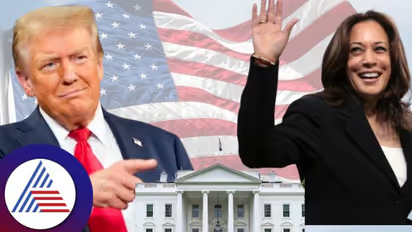Donald Trump vs Kamala Harris: Why US votes in Nov, but inaugurates new president 11-weeks later in Jan?

Synopsis
The US electoral calendar features a November election day followed by a January inauguration, allowing for a thorough transition period and preparation for the new administration.
As American voters cast their ballots on Thursday in the closely watched 2024 presidential election, the nation braces for what could be a prolonged wait for results. The election features a tight race between incumbent Vice President Kamala Harris, representing the Democratic Party, and former President Donald Trump of the Republican Party, both of whom have been neck-and-neck in recent polling.
Citizens will vote on November 5, yet the new president won’t be inaugurated until January 20, 2025—a gap that allows for a detailed transition of power but contrasts with the quicker processes seen in many other democracies.
The timing of US presidential elections
Federal elections in the United States are held on the first Tuesday following the first Monday in November. This tradition, established in the 19th century, was designed to accommodate an agricultural society, allowing farmers to complete their harvests and travel to polling places in manageable weather. The establishment of a uniform election day across states in 1845 was a significant step in streamlining the electoral process.
The choice of Tuesday also respects religious practices, as Sunday was widely observed as a day of worship, and Wednesday often served as a market day. Consequently, Tuesday emerged as the most practical option for Election Day, allowing citizens to engage in the democratic process without significant conflicts.
Transition period and the 20th Amendment
Originally, the US Constitution set March 4 as the date for presidential inaugurations, leading to a four-month "lame duck" period after elections. This period refers to the time when the incumbent president, whose successor has been elected, retains diminished political power. However, the lengthy transition became problematic during the Great Depression, highlighting the need for a more efficient change in leadership.
In response, the 20th Amendment was ratified in 1933, moving Inauguration Day to January 20 and effectively reducing the transition time to just under three months. This change facilitates a more responsive government during critical periods, allowing the new administration to begin addressing pressing national issues more promptly.
Role of the Electoral College
The Electoral College system further complicates the timeline of US elections. Unlike parliamentary systems, where a winning party can assume power immediately, the US requires a formal process whereby electors cast their votes in December to finalize the election outcome. This system, while ensuring thorough review and verification, delays the start of the new president's term and the official transfer of power.
The 11-week period between the election and inauguration allows the president-elect time to prepare for governance. During this time, the incoming administration can assemble a cabinet, develop policy strategies, and address urgent national concerns. This transition period promotes continuity and effective coordination, laying the groundwork for the new government’s agenda.
Check the Breaking News Today and Latest News from across India and around the world. Stay updated with the latest World News and global developments from politics to economy and current affairs. Get in-depth coverage of China News, Europe News, Pakistan News, and South Asia News, along with top headlines from the UK and US. Follow expert analysis, international trends, and breaking updates from around the globe. Download the Asianet News Official App from the Android Play Store and iPhone App Store for accurate and timely news updates anytime, anywhere.